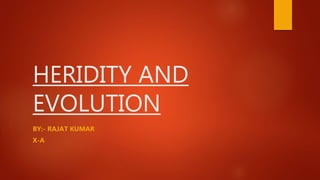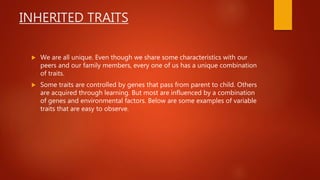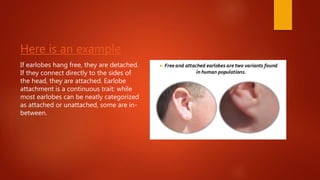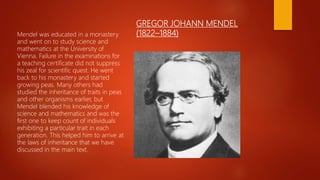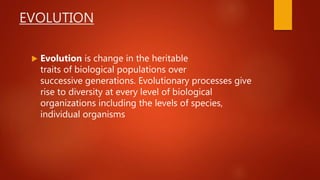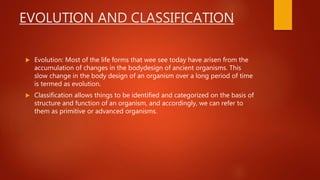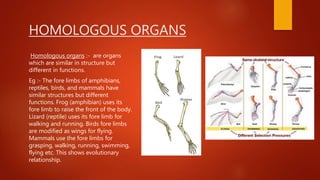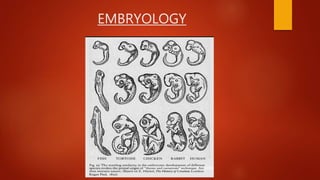1) The document discusses heredity and evolution, including the accumulation of variation during reproduction and its effects over generations.
2) It covers Mendel's experiments which established the rules of inheritance and traits being passed from parents to offspring.
3) Evolution occurs as generations accumulate subtle variations, with some helping organisms survive and pass on their traits while others do not, not impacting survival.
